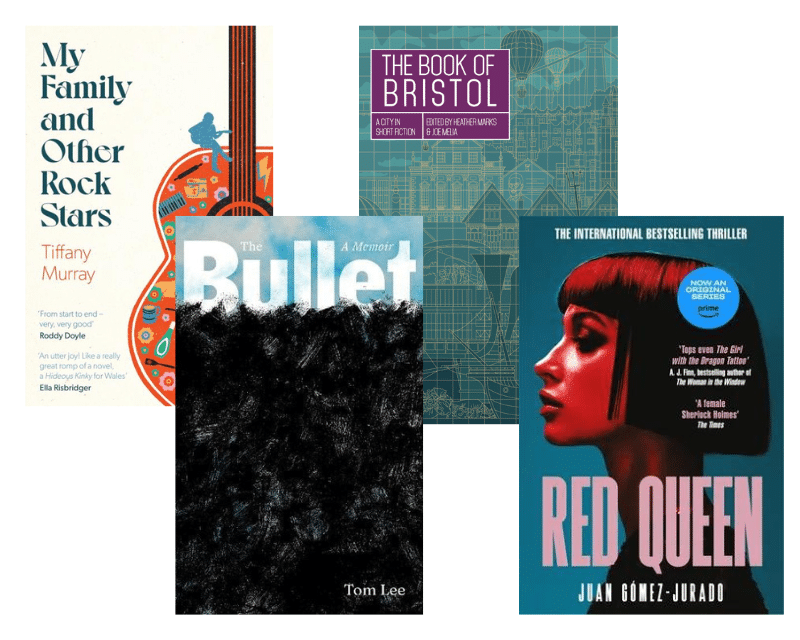- Collected
- Article
Stranger Than Fiction?
The weirdly wonderful world of nonfiction

- 17 August, 2020
- Mary Colson
I can’t remember a time when I didn’t enjoy knowing. All kinds of stuff. I didn’t categorise the knowing into topics or curriculum areas or arts or sciences; I just liked knowledge. I hoovered it up from all sorts of books that I was too young to know were already divided into two types. As I entered my teens, to survive at school (and to have any hope of a social life), I had to backcomb my hair, pretend to like The Mission and go underground about this need to know but all the while I was secretly mining for facts.
It’s not flattering to think that there’s a heavy percentage of Gradgrind in my makeup but now as a nonfiction writer for children, it’s as if my DNA fitted me for such a role. My day job involves making sense of the world, its scale and species, peoples and places, for my young audience. Some might think this an unimaginative or soulless occupation akin to Dr Johnson’s self-deprecating ‘drudge’ but I can take it. Even in an alternative-fact, post-truth world, there’s still a comfort and a joy in knowing.
There’s also a joy in delivering and when I’m not sitting in my study getting my head around Beyoncé’s discography or Einstein’s equations, I visit schools and deliver nonfiction-writing workshops. It’s simply impossible to tire of a child, their hand skyscraping as far as shoulder ligaments will allow, asking such gems as ‘When your pen runs out, do you get another one?’
I can be at a vast comprehensive in Bolton, a small private school in Cumbria or an international school in Yangon and the children always want to know the same thing: what stories have I written? I explain that today they’re doing a special workshop on nonfiction and that we’re going to find out some amazing things. A few hands go up. ‘So you don’t write stories?’ a little boy will ask. ‘No, I don’t, but what I do write is….’ ‘Aren’t we going to be writing stories today?’ enquires a tall girl, a prefect badge proud on her lapel. ‘Oh we’re going to be doing something even more brilliant because we’re going to….’ ‘No characters or descriptions at all?’ a doe-eyed littl’un saddens. I watch as their little faces frown and their heads droop as the news sinks in. In my head, I hear their disappointment: ‘So you’re not going to spirit us away to fantasy lands or lead us on quests of derring-do?’ ‘No, kids, that’s right. Where we’re going, there are no magic carpet rides, no spiral staircases down tree trunks and definitely no fur coats in wardrobes. But there are incredible narratives and there will be heroes and villains, sometimes princesses, curious creatures and strange inventions and perhaps different faiths and even life lessons, too. And what’s really fantastic is, it’s all true.’
The hush in the assembly hall continues as the children mindfully weigh up the options before them: go back to class and pick up with normal lessons or stay put with the writing imposter in front of them and see what happens. Thankfully, they always stay. (In the interests of full disclosure, this could be because I play the trump card and tell them they’ll be going first in the dinner queue.)
At this early point in proceedings, I hope I’ve got enough of them intrigued to continue even if there remain a few hardcore sceptics at the back. I take a deep breath and push on. I tell them funny writing moments I’ve had like being asked by a publisher to find out who did Cleopatra’s make up. (‘Was it her husband?’ asked one child. ‘No, it was Julia Caesar,’ chimed another.) I also mention a picture editor emailing me in some panic to say she was finding it hard to find photos of the yeti but not to worry about the mermaid ones, they were no problem. This usually breaks the lack-of-stories tension. After that, I tell them that writing nonfiction is as creative and imaginative as fiction writing and sometimes even harder because the real world is so weird and wonderful that sometimes it seems unbelievable. I tell them that nonfiction can give them life, the universe and everything — and who wouldn’t want that?
From where I’m standing (first in the dinner queue, remember, stick with me, I’ve got a fast track pass), nonfiction is as relevant today as it has ever been. Our interest in the world around us only increases with Wikipedia frequently claiming new record daily hits. In these strange post-truth times of spin, counter spin and plain old sham, jaded adults crave knowledge and facts with a frustrated desperation. More innocently, children crave knowledge because they’re just starting to know the world and be enthralled by it. (You could argue that we need to teach our youngsters how to ‘read’ nonfiction even more carefully than we teach them to read fiction. Reading, after all, has many different facets.) There are some nonfiction bright lights challenging the domination of fiction in the bestseller lists such as the Deadly 60 and Horrible Histories books. To my mind, nonfiction won’t go out of fashion because it works outside of fashion. Nonfiction is always on trend. Nonfiction appeals to children because it piques their curiosity and often their sense of humour too.
All this I play on in my workshops. Together, in a day, we write A–Zs of amazing animals or information books about volcanos. We write dynamic copy, full spreads of text with carefully chosen images woven in. We think of clever captions and decide which words to gloss. We write e-leaflets on PSHE issues and respond to breaking news stories as journalists. We draw on all the skills and tools sadly all too often only credited to fiction writers.
There is a tendency to worry about what children read; there is also a cultural tendency to artificially promote fiction as superior to nonfiction. Until recently, I still taught English part time in a local secondary school. Over a teaching career of nearly twenty-five years, I lost count of the number of times a parent worried to me that their child ‘isn’t reading’. What they meant is that they weren’t reading fiction. It nearly always turned out that their child was reading, all the time in fact, but not fiction. They read computer magazines or gaming publications or fishing books or tomes about planes, trains and automobiles. Or sports biographies or The Guinness Book of Records. Or football reports in the paper or online. So why isn’t this reading valued and recognized to the same degree?
Fiction and nonfiction are two sides of the same coin. They enhance and engage each other. Theirs is the true symbiotic relationship. Nonfiction, far from being the stultifying Dickensian schoolroom of Gradgrindian horror, is dynamic, thought provoking and, above all, true. And if children are exposed to something that really happens/ed and it’s really weird, what could be more wondrous than that?
Facts and figures have been manipulated by the powerful since time immemorial. For the millennial generation with tablets and smartphones at the ready, being nonfiction literate and nonfiction savvy are going to be essential to separate out the fake from the faithful: the best nonfiction for any age group but particularly for children promotes the independent thinking, critical reasoning and judgement to do just that. Publishers conduct exhaustive research into reading habits, learning styles and popular culture to be sure that what they’re asking authors to produce is not only current but styled in accessible ways to meet the demands of an extremely discerning audience. By the end of a school visit, the children are excited by their newfound knowledge and glad that they hung around. They return to their class teachers with that same joy of discovery and knowing I remember from my own childhood and to that I say, all hail.
So enough of the fiction/nonfiction twain with each vying for pyrrhic supremacy. After all, rounded readers are surely more desirable than narrow ones. Children’s nonfiction has got some cultural ground to make up, I’ll concede, but it’s getting there. With November bagged as nonfiction month, a coordinated national initiative to raise the profile of nonfiction writing for younger audiences, the future seems bright. And that’s a fact.
You might also like:
Anywhere But a Room of One’s Own
I am a writer looking to be re-homed. All I need is a laptop, a table and a chair, and…
RLF Fellows’ News: May 2024
Publishing RLF Fellow Tom Lee’s new book, The Bullet, his memoir about family and mental health, has recently been published…
Her Majesty The Queen is announced as our new Royal Patron
To mark the first anniversary of Their Majesties’ Coronation, it has been announced Her Majesty The Queen will take on…


